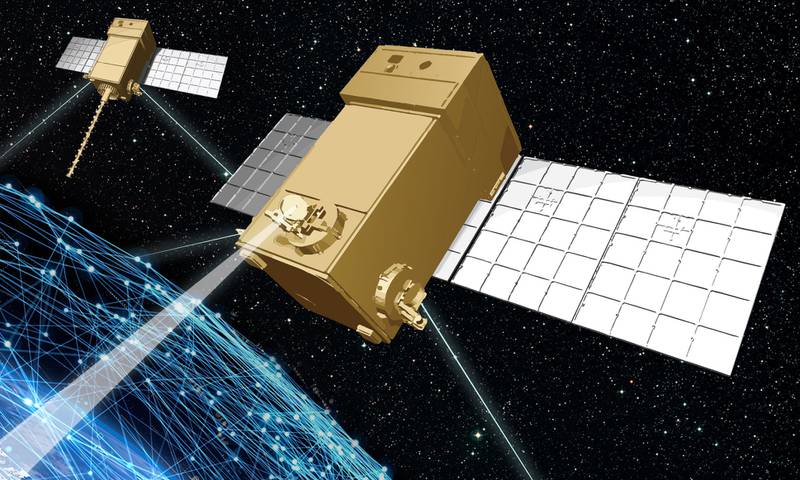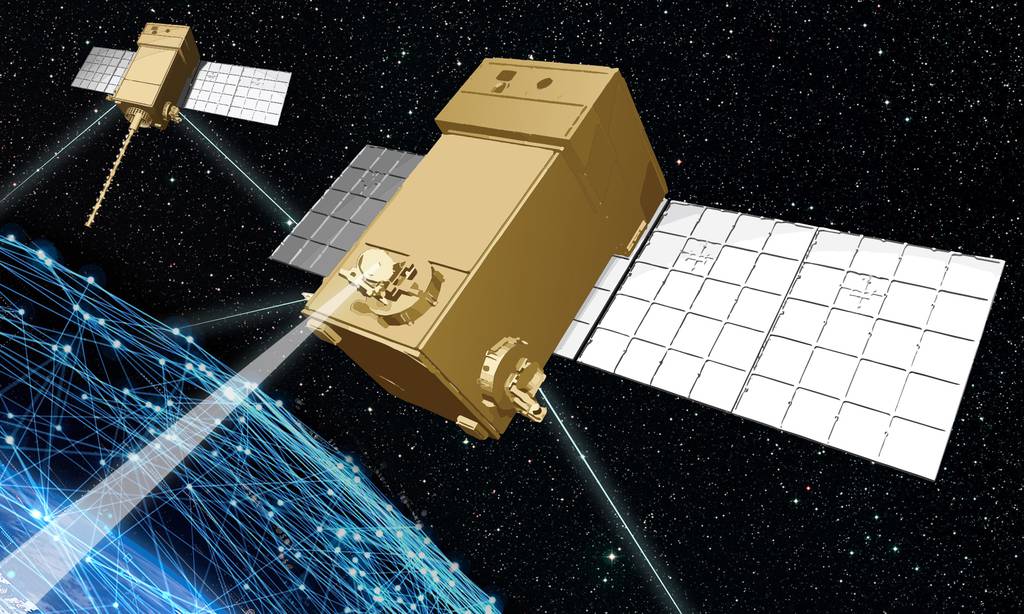WASHINGTON — The Space Development Agency plans to launch several demonstration satellites this year, ahead of the launch of its National Defense Space Architecture in 2022.
“We have a few demos planned in 2021,” said SDA Director Derek Tournear during a detailed presentation Feb. 11 at the virtual SmallSat.
SDA was established in 2019 to take a new approach to building satellite constellations, with a focus on smaller satellites operating in low Earth orbit (LEO). Unlike most U.S. Space Force constellations that consist of a handful of satellites in geosynchronous orbit (GEO), the NDSA will be made up of hundreds of satellites operating in LEO. The new constellation will be made up of multiple layers providing various capabilities, from tracking hypersonic weapons to providing beyond-line-of-sight targeting.
RELATED

The agency is slated to begin launching its satellites in 2022, but first it plans to launch several demonstration satellites that will help pave the way for various technologies.
The first two projects to launch will be Mandrake II and LINCS, both of which will demonstrate optical intersatellite crosslinks to help satellites talk to each other easily.
Optical crosslinks will be a key enabling technology for the NDSA, where they will be used to create a mesh network with the agency’s transport layer satellites, the first of which are being built by Lockheed Martin and York Space Systems. That mesh network will be able to move data rapidly between satellites to facilitate on-orbit processing and, ultimately, connect sensor data collected by any satellite to a war fighter on the ground in seconds.
Mandrake II, consisting of two small satellites, will demonstrate optical crosslinks between the two, as well as to the ground and to airborne systems, explained Tournear.
Mandrake II was supposed to launch on the first mission of SpaceX’s new rideshare program, Transporter-1, which took 143 satellites into orbit in Jan.
“This was a joint mission between DARPA, AFRL and SDA to build these two satellites,” said Tournear. “Unfortunately, there was a mishap in payload processing down at the Cape, so they were not two of the 143 that were launched as part of Transporter-1. But the good news is, while they were damaged in payload processing, we will be able to repair them, and we will be able to launch them on Transporter-2.”
That second transport is expected to launch in June.
Mandrake II is one of the risk reduction satellites for the Defense Advanced Research Project Agency’s Blackjack program, intended to demonstrate the military benefit of a proliferated constellation in low Earth orbit. Tournear said DARPA will launch its first two Blackjack satellites later this year.
“They’ve got several different concepts,” he said of Blackjack. “They’re going to fly two satellites later this year, and then they’re going to culminate with more than that — somewhere on the order of dozens … up to 18 in 2022/2023 timeframe as the full DARPA Blackjack program.”
While Blackjack is closely related to the SDA’s own constellation — and SDA is partnering on some Blackjack technologies, like Mandrake II — the two are not directly connected.
Another optical crosslink demonstration is LINCS, which is being built by General Atomics. SDA awarded the company $5.5 million for that effort. Like Mandrake, LINCS will involve two satellites communicating via the crosslinks on orbit. It will also launch on SpaceX’s Transporter-2.
A slightly different demonstration is the Prototype Infrared Payload, or PIRPL.
“PIRPL is a joint SDA/MDA program,” said Tournear. “The performer is Northrop Grumman. And that is to fly medium-field-of-view, multispectral imager for OPIR to be able to demonstrate the feasibility and use that for some of our models.”
SDA awarded Northrop Grumman $13.8 million in June for the prototype. PIRPL will be carried to orbit on the company’s Cygnus NG-16 spacecraft during its Commercial Resupply Services mission to the International Space Station. That launch is slated for July.
SDA is also working with the Air Force Research Laboratory on the XVI program. “That is primarily an AFRL program,” said Tournear. “That would demonstrate that you could go from space to a Link 16 tactical data link network.”
SDA wants to use Link 16, the most common tactical data link used by U.S. war fighters, to push its sensor data to weapon systems and war fighters. Six of its first transport layer satellites will have Link 16 terminals built in.
AFRL awarded Viasat $10 million through the Space Enterprise Consortium in 2019 to build a Link 16-capable spacecraft. It will operate in low Earth orbit, expanding the Link 16 network beyond-line-of-sight. The payload will be incorporated into a Blue Canyon Technologies bus with an antenna array provided by Roccor.
While Viasat initially anticipated a launch in summer 2020, the company noted in August that the payload will be delivered to the Space Force this spring for a launch in the fall.
Nathan Strout covers space, unmanned and intelligence systems for C4ISRNET.








